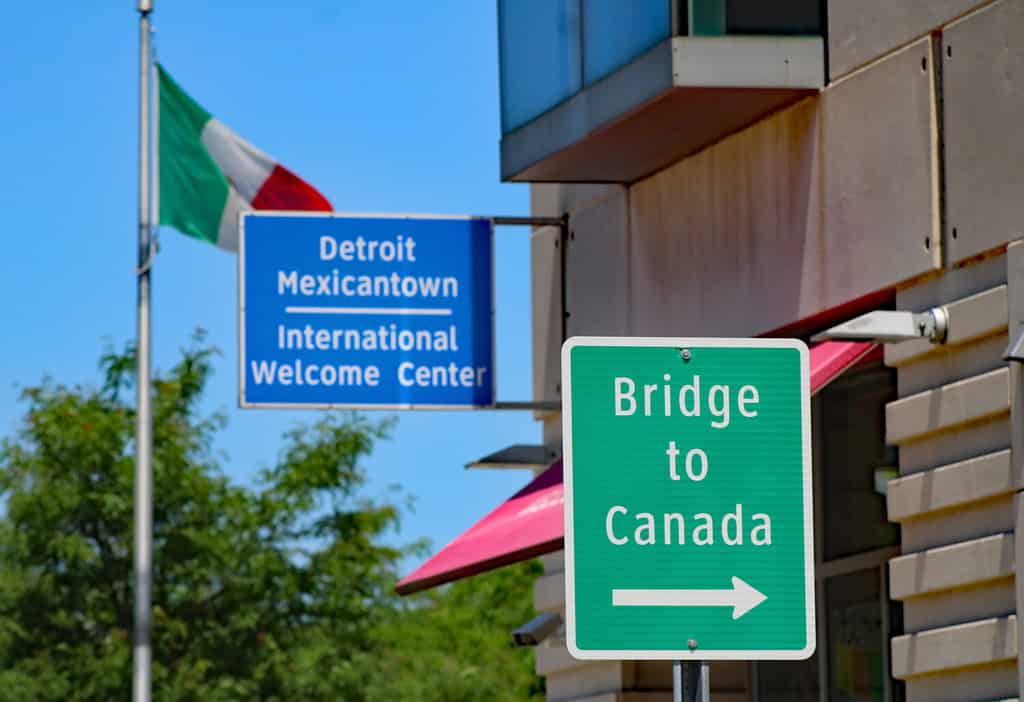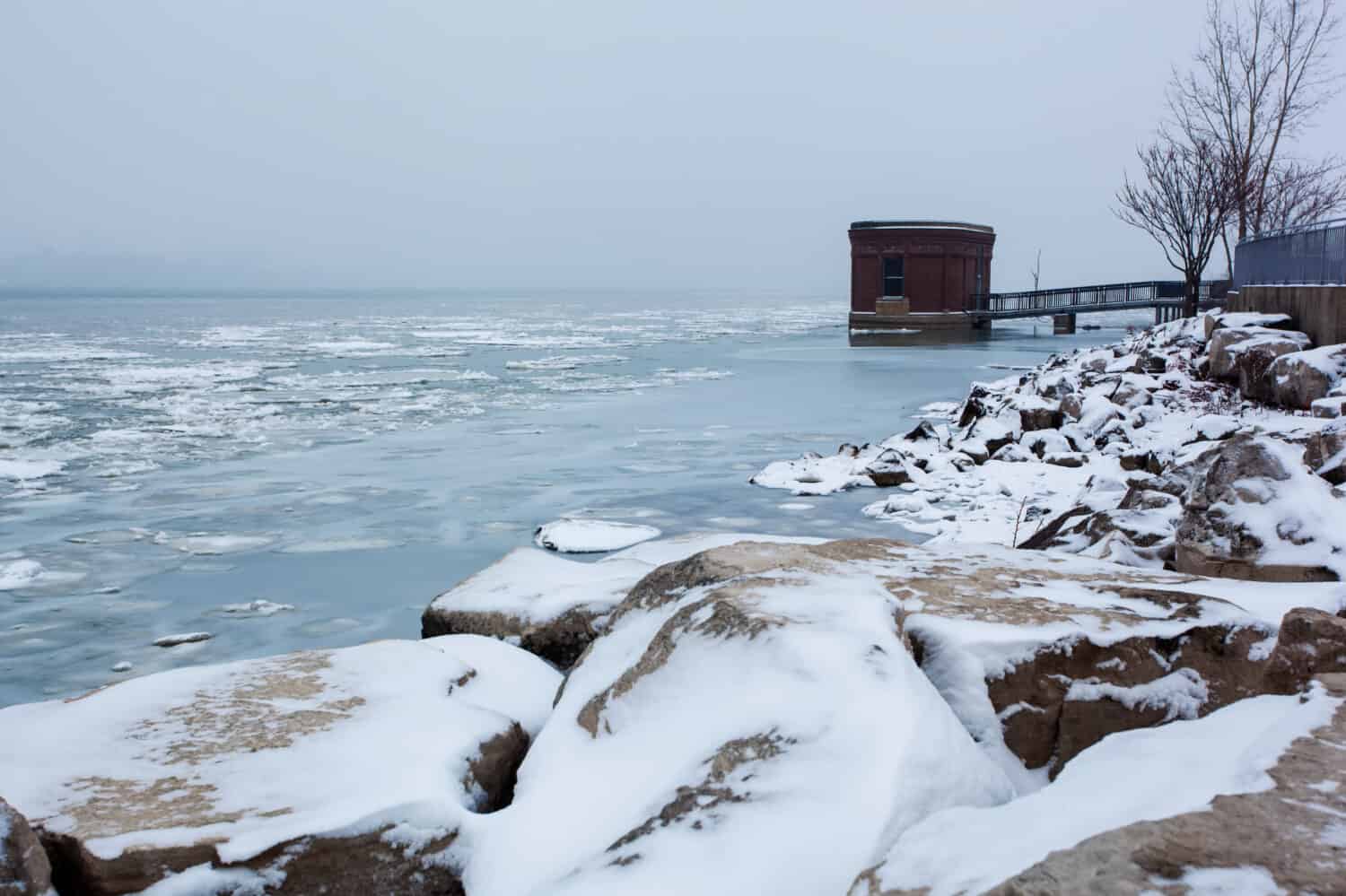Wayne County covers around 623 square miles in southeastern Michigan. It consists of 34 cities, including Detroit, 41 public school districts, and nine townships. Wayne County has a population of about two million people, making it one of the most populated counties in the state and the 13th most populated in the country. Usually, the county’s hottest average temperature ranges from 64°F to 83°F. However, temperatures sometimes soar over 100 degrees, like the heatwave of 1936. This article will explore the highest temperature ever recorded in Wayne County.
The Highest Temperature Ever Recorded in Wayne County

Wayne County experienced the highest temperature ever recorded in the summer of 1936. A severe heatwave affected the whole country, and many people lost their lives.
©MichaelAnthonyPhotos/Shutterstock.com
Wayne County experienced the highest temperature ever recorded in the summer of 1936. A severe heatwave affected the whole country, and many people lost their lives. Wayne County experienced scorching temperatures between July 8th and July 14th, with an average of 102.1 degrees Fahrenheit for the entire week without any precipitation.
| Date | Maximum Temperature | Minimum Temperature |
|---|---|---|
| 7/8/1936 | 104 | 72 |
| 7/9/1936 | 102 | 75 |
| 7/10/1936 | 102 | 77 |
| 7/11/1936 | 101 | 77 |
| 7/12/1936 | 100 | 76 |
| 7/13/1936 | 102 | 73 |
| 7/14/1936 | 104 | 69 |
The History of Wayne County’s Weather
Wayne County, Michigan, has a humid climate with hot summers and cold winters. Since it is within close proximity to Lake Erie in the Great Lakes region, it experiences high snowfall from the lake during the winter. The average temperature for the county ranges from below-freezing in January to the mid-70s during its hottest month, July. Rain is common throughout the year, with an average yearly rainfall between 29 to 32 inches. Wayne County experiences moderate humidity during the summer but can also be susceptible to extreme weather, like tornadoes, during the warmer months.
This county’s average climate is as follows:
- Summer: Maximum temperatures are approximately 84 degrees Fahrenheit
- Winter: Minimum temperatures are around 18 degrees Fahrenheit
- Snow: An average snowfall of 35 inches of snow annually
- Rain: An average of 34 inches per year
While this county experienced its worst heatwave in 1936, the summer drought of 1988 came very close. Unfortunately, the summer of 1988 was one of the hottest and driest summers on record. However, the county received some reprieve when July arrived as it began to rain. But before July arrived, Wayne County experienced 39 days over 90 degrees Fahrenheit and 18 days of 95+ degree temperatures. Furthermore, the county experienced several days where temperatures exceeded 100 degrees.

Wayne County experiences moderate humidity during the summer but can also be susceptible to extreme weather, like tornadoes, during the warmer months.
Image: Sean Pavone, Shutterstock
©Sean Pavone/Shutterstock.com
How the Highest Temperature Ever Recorded in Wayne County Impacted People
The scorching heatwave of 1936 was caused by a prolonged drought affecting the whole country at the time. Furthermore, due to poor farming methods, there was very little vegetation to help alleviate the hot temperatures. Sadly, an estimated 364 people died in Wayne County during this heat wave. The state had 570 fatalities, while 5,000 heatwave-related deaths occurred throughout the USA. As a result, this was the USA’s most deadly heatwave ever recorded.
Most of the deaths were caused by heat stroke, and the most vulnerable were the laborers and auto industry workers. Unfortunately, there was very little one could do to find relief from the heat in the 1930s. Air conditioning was in its early stages; only hotels or shopping centers had air conditioning. Furthermore, freezers were not established yet, so people had to order big blocks of ice to place in their fridges to keep the food from spoiling. Therefore, residents of Wayne County had to rely on fire hydrants, pools, rivers, or lakes to stay cool while they waited for their ice deliveries. In addition, many children set up lemonade stands and probably made a pretty penny during that week.

The scorching heatwave of 1936 was caused by a prolonged drought affecting the whole country at the time. Furthermore, due to poor farming methods, there was very little vegetation to help alleviate the hot temperatures.
Image: Sean Pavone, Shutterstock
©Sean Pavone/Shutterstock.com
Impacts on Infrastructure

Several Wayne County factories had to close their doors for the entire week to spare their laborers from heat stroke.
Image: Everett Collection, Shutterstock
©Everett Collection/Shutterstock.com
The hottest temperature ever recorded in Wayne County significantly impacted the infrastructure. For example, several Wayne County factories had to close their doors for the entire week to spare their laborers from heat stroke.
Environmental Impacts

While heat waves and droughts were quite common in the 30s (they were actually called the Dust Bowl years), the summer of 1936 sent shockwaves across the nation as it caused the most widespread and destructive heat wave to ever hit the Americas.
©iStock.com/Sean Pavone
The heatwave also had a significant impact on the environment. For example, farmers across the county and state saw crop failure, causing wheat and corn prices to skyrocket. While heat waves and droughts were quite common in the 30s (they were actually called the Dust Bowl years), the summer of 1936 sent shockwaves across the nation as it caused the most widespread and destructive heat wave to ever hit the Americas.
Preparedness and Response

If you don’t have air conditioning, retreat to a public space with a cooling system, like a mall or public library. Alternatively, find a friend with an air conditioning and ask if you can stay with them until the heatwave has passed.
©fizkes/Shutterstock.com
While there was not much people could do about a heat wave in the 1930s, today, there are a few tips and tricks that can keep you safe, including:
- If you don’t have air conditioning, retreat to a public space with a cooling system, like a mall or public library. Alternatively, find a friend with an air conditioning and ask if you can stay with them until the heatwave has passed.
- Don’t forget about your pets; they can also suffer from heatstroke, so ensure they have access to your home and plenty of water to drink.
- Install an air conditioner with tight-fitting insulation.
- Get as many fans as possible if you cannot afford an air conditioner
- Cover the windows in your home with shades, awnings, blinds, or drapes in the morning and afternoon when the sun shines directly into your home.
- You can also install temporary window reflectors to deflect the heat away from your home.
- Add insulating weather strips to the windowsills and doors to keep the air cool inside the home.
- If you have elderly, young, or financially deficient neighbors, check in on them, as they might require additional help.
- Go for a first aid course and learn how to treat emergencies related to heat stroke.
- Plant as many shade trees as you can around your home. While this might be a long-term solution, you will be grateful for their shade when the trees have fully matured.
Natural Disasters in Wayne County

Based on these calculations, Wayne County has a higher risk of falling prey to strong winds followed by flooding and tornadoes.
Image: Ray Akey Photography, Shutterstock
©Ray Akey Photography/Shutterstock.com
In a recent study, Wayne County ranks highest on a list of Michigan counties most vulnerable to natural disasters. In addition, the Federal Emergency Management Agency released the NRI or National Risk Index, placing Wayne County in the 26th spot among 3,142 counties in the USA most vulnerable to natural disasters. The calculations are based on 18 types of natural disasters, including hurricanes, earthquakes, tornadoes, volcanoes, floods, heat waves, and extreme cold. Based on these calculations, Wayne County has a higher risk of falling prey to strong winds followed by flooding and tornadoes.
Thank you for reading! Have some feedback for us? Contact the AZ Animals editorial team.








